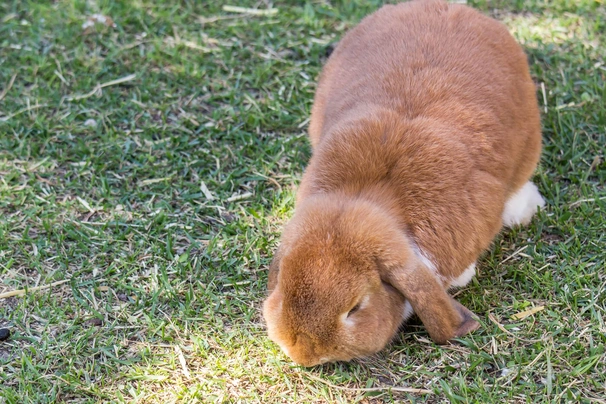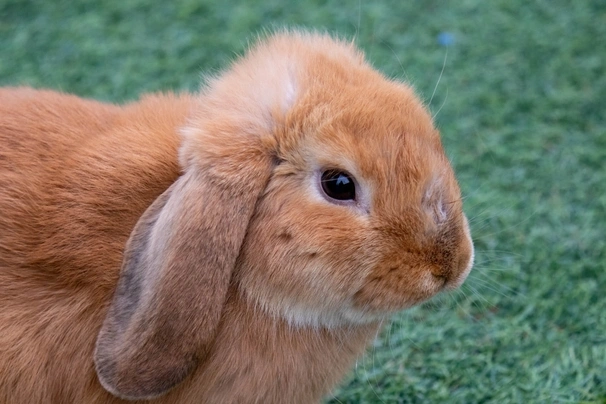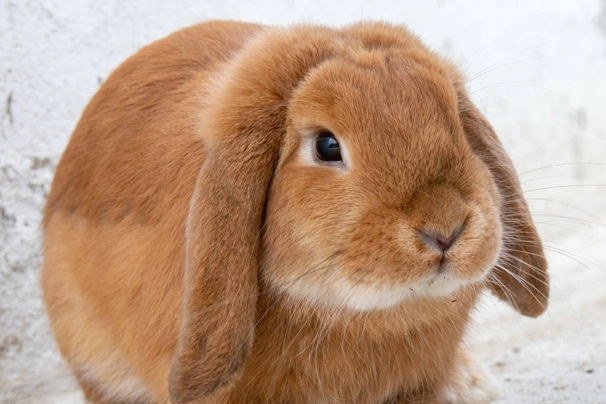Pets
Pets for studWanted petsBreedersAccessories & services
Knowledge hub
Support
Support & safety portalCashmere Lop
Introduction of the Cashmere Lop
It’s thought the Cashmere Lop was first discovered in a nest of dwarf lop kits in Wales in 1980; the Cashmere Lop boasts a luxurious coat that’s soft and thick. It’s a medium sized bunny that was accepted as a distinct breed in the late 1980s.
The Cashmere Lop comes in a wide variety of colours and commonly weighs around four or five pounds.
History of the Cashmere Lop
Miss Turner noticed something different about some of the kits in her nest of dwarf lops in Wales over 30 years ago. Some of the babies displayed a longer, thicker and more luxurious coat. Just six years later this adorable little animal had won the hearts of many fanciers and The National Cashmere Lop Club was founded.
By the mid 1990s the Cashmere Lop had started to appear in serious showing circles and quickly won a dedicated band of followers who worked hard to develop the breed and get it standardised – meeting with some resistance from the BRC along the way. Eventually the Cashmere Lop was recognised in all colours and is now a popular and serious contender at shows across the globe. Because it’s such a new breed, it’s still possible to find records of what the Cashmere looked like when it first appeared, and those fanciers who worked on creating the ‘breed’ will tell of the satisfaction they feel having seen the type develop and grow more beautiful.
Appearance of the Cashmere Lop
- Main colourways: agouti, Chinchilla, sable, blue, black, white, fawn and seal point
- Average weight: 2.4kg
The Cashmere Lop is a medium sized bunny, with long, thick and silky hair. Its compact body is remarkably powerful for such a small animal. The ears are delicate, long and held close to the head and the insides should be completely hidden and not visible from any angle.
It is however, the coat that is this animal’s crowning glory. The fur should be thick, but never woolly and the top coat should be much heavier than the under, and it should also be longer. The ideal length for Cashmere fur is 1 ½ inches to two inches in length and should lie nicely. Accepted colours include black, blue, Chinchilla, white, sealpoint, lilac, cinnamon and sable among many others.
Temperament of the Cashmere Lop
This is an engaging and very intelligent little animal that makes the ideal pet for adults and older children. They are more than capable of learning their name and can be trained to use a litter tray – very useful if you’re planning on keeping him as a house rabbit.
They are very much ‘people’ rabbits and will even rush to greet people they know. They enjoy being picked up by gentle handlers and providing they’ve been allowed to get used to people from being young, they will love nothing more than having a cuddle with their owner.
As long as they are provided with a safe environment they will happily live in or outdoors and are probably one of the easiest and rewarding rabbit breeds to keep as a pet. As long as you don’t mind very frequent grooming sessions.
Health of the Cashmere Lop
As with many hybrid animals, the Cashmere Lop is generally hardy, although it must be remembered that not only is he a small animal, but all rabbits are delicate animals in terms of size and constitution. However, as long as their basic needs are met, Cashmere Lops can live up to five years.
A rabbit’s teeth grow continuously and should not be allowed to overgrow. A diet high in roughage – good hay and fibrous green vegetables such as kale, dandelions and cabbage – will help keep the teeth worn down, but any owner should check their pet’s teeth regularly to watch for signs of overgrown teeth. Veterinary treatment should be sought if anything seems amiss. Many signs of overgrown teeth can look like other things – weight loss, loss of appetite, runny eyes or nose and lethargy, so you must always be vigilant.
Flystrike is also a common issue and occurs when an overweight animal cannot groom himself and soiled areas are allowed to build up in his fur. In warmer weather flies are attracted to these areas and may lay their eggs in the rabbit’s coat. Once hatched, the larvae can burrow under the skin causing great discomfort and infection. Veterinary treatment must given to any animal with suspected flystrike.
All rabbits should be vaccinated against myxomatosis and Viral Haemorrhagic Disease – both of which are infections and can be fatal. They should also be treated for worms, fleas and ticks.
Caring for the Cashmere Lop
A Cashmere Lop can live indoors or outdoors, but must be provided with a secure environment where he can totally relax. If he’s going to live outdoors his hutch should be completely weatherproof and have a cover to put over the mesh front when the weather turns. It should be lined with hardwood shavings and straw and have a covered area where the rabbit can nest. The hutch should be placed out of direct wind or sunlight – a well-ventilated, well-lit shed is ideal, but not absolutely necessary – and should be cleaned out thoroughly once a week.
If he’s going to live indoors he should be trained to use a litter tray and given a cage or crate where he can retire to rest and chill out. Any cables, wires (or shoes!) should be kept out of the way as all rabbits are prone to chew.
As a long-haired breed, the Cashmere should be groomed thoroughly once a week, or whenever you feel is necessary. If matted areas or tangles are allowed to develop they can prove difficult to brush out so it’s best to not let them occur in the first place.
The Cashmere’s diet should consist of good quality hay and rabbit pellets, along with plenty of fibrous green vegetables like cabbage, dandelions and kale. He should never be fed anything he wouldn’t encounter in the wild. He should also always have access to clean drinking water.
Related adverts
See all
Mini lop
£60


